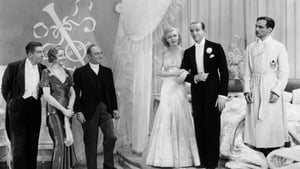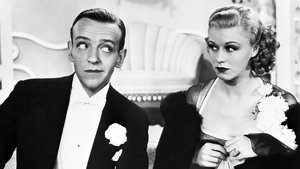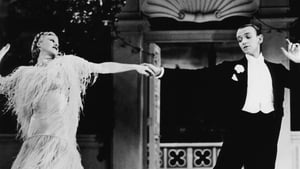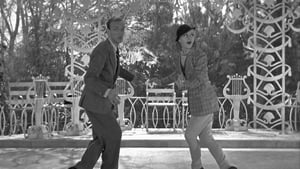Contact: [email protected]
Video Sources 0 Views
- Watch trailer
- Top Hat

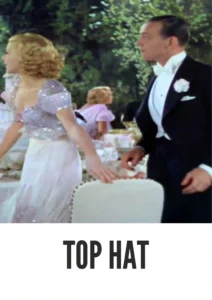
Synopsis
Table of Contents
ToggleReview: Top Hat (1935) – A Classic Musical Extravaganza Revived in Radiant Color

Introduction
“Top Hat” (1935) epitomizes the Golden Age of Hollywood musicals, enchanting audiences with its dazzling dance numbers, sparkling wit, and timeless romance. In this review, we’ll explore the significance of this early colored film and its enduring appeal in the realm of musical cinema.
Check The Full Colorized Movies List
Check Our Colorized Movies Trailer Channel
Understanding Top Hat 1935: Director, Cast, and Genre
Directed by the legendary Mark Sandrich, “Top Hat” (1935) showcases his flair for creating cinematic magic that transcends time and space. The film features a dream team cast, with Fred Astaire and Ginger Rogers lighting up the screen with their electrifying chemistry and unparalleled talent. Blending elements of comedy, romance, and musical spectacle, “Top Hat” (1935) transports viewers to a world where love conquers all and dreams come true with the sweep of a dance step.
Exploring the World of Top Hat 1935: Plot and Characters
“At its heart, “Top Hat” (1935) follows the misadventures of a dashing American dancer, portrayed by Fred Astaire, who finds himself embroiled in a case of mistaken identity and romance in the glamorous world of London society. Along the way, he encounters a spirited fashion model, played by Ginger Rogers, whose fiery spirit and irresistible charm captivate his heart and ignite a whirlwind romance that defies convention and sweeps audiences off their feet. With its witty dialogue, memorable characters, and show-stopping musical numbers, “Top Hat” (1935) is a cinematic tour de force that continues to delight audiences of all ages.
The Art of Film Colorization
Film colorization serves as a transformative tool that enhances the visual experience of classic movies, breathing new life into timeless stories and captivating audiences with vibrant hues. By digitally adding color to black and white films, colorization allows viewers to immerse themselves in the rich tapestry of cinematic worlds, exploring every nuance and detail with fresh eyes and renewed appreciation.
Early Colored Films: A Brief History
The history of colored films traces its roots back to the early days of cinema, with filmmakers experimenting with various techniques to add color to their creations. From hand-tinted frames to early Technicolor processes, the evolution of colored film has been marked by innovation and ingenuity, paving the way for the development of modern colorization techniques that continue to captivate audiences to this day.
Top Hat 1935 and Its Early Colored Version
The decision to release “Top Hat” (1935) in a colorized format was met with both anticipation and trepidation. While some welcomed the opportunity to experience the film in vibrant color, others expressed concerns about the potential impact on its visual aesthetic. Nevertheless, the early colored version of “Top Hat” (1935) offers viewers a fresh perspective on the timeless tale of love and romance, enhancing its emotional resonance and captivating audiences with its luminous beauty.
The Debate Over Film Colorization
The debate over film colorization continues to divide audiences and critics alike, with proponents praising its ability to breathe new life into classic movies and introduce them to a new generation of viewers, while detractors argue that it compromises the artistic integrity of the original work and diminishes its historical significance. As the debate rages on, filmmakers and audiences alike are left to ponder the merits and drawbacks of colorization in the ever-evolving landscape of cinema.
Examining Top Hat 1935 as an Early Colored Film
As with any colorized classic, the impact of colorization on “Top Hat” (1935) is a matter of personal interpretation. Some may argue that it enhances the film’s visual appeal and immerses viewers in its world, while others may feel that it detracts from the stark beauty of the original black and white version. Regardless of one’s stance on the issue, there’s no denying the enduring power of “Top Hat” (1935) as a timeless musical extravaganza that continues to captivate audiences around the world.
Influence and Legacy: Top Hat 1935’s Impact on Cinema
“Top Hat” (1935) has left an indelible mark on the world of cinema, inspiring countless filmmakers and captivating audiences with its timeless tale of love and romance. From its unforgettable performances to its sweeping cinematography, the film continues to resonate with viewers of all ages, reaffirming its status as a beloved classic of the musical genre.
Director’s Cinematic Legacy: Beyond Top Hat 1935
Mark Sandrich’s influence extends far beyond “Top Hat” (1935), with a diverse body of work that continues to captivate audiences around the globe. From “Holiday Inn” to “The Gay Divorcee,” Sandrich’s films are celebrated for their wit, charm, and sophistication, solidifying his legacy as one of the preeminent directors of Hollywood’s Golden Age. Through his groundbreaking work, Sandrich has left an indelible imprint on the world of cinema, inspiring generations of filmmakers to follow in his footsteps.
Themes Explored in Top Hat 1935
“Top Hat” (1935) explores a myriad of themes, from the transformative power of love to the pursuit of happiness in the face of adversity. Through its dazzling dance numbers and heartfelt performances, the film invites viewers to ponder the complexities of the human heart and the enduring strength of the human spirit. As audiences immerse themselves in the world of “Top Hat” (1935), they are reminded of the universal truths that bind us together and the timeless appeal of love in all its forms.
Reception and Controversy Surrounding Top Hat 1935
Upon its release, “Top Hat” (1935) received widespread critical acclaim, with many praising its dazzling dance sequences, sparkling wit, and unforgettable performances. However, the decision to release the film in a colorized format sparked debate among purists, reigniting the age-old discussion surrounding film preservation and artistic integrity. Despite the controversy, “Top Hat” (1935) remains a beloved classic that continues to resonate with audiences of all ages, reaffirming its status as a timeless masterpiece of the musical genre.
Where to Watch Top Hat 1935 Online
For those eager to experience the timeless magic of “Top Hat” (1935), the film is readily available on popular streaming platforms such as Netflix, Amazon Prime, and Hulu. Whether you choose to watch it in its original black and white format or the early colored version, “Top Hat” (1935) promises to transport you to a world of romance and spectacle, where dreams come true and love conquers all.
FAQs About Top Hat 1935
Q: Is “Top Hat” (1935) based on a true story? A: No, “Top Hat” (1935) is a fictional tale crafted by screenwriter Dwight Taylor, who drew inspiration from the glamorous world of Hollywood and the art of dance.
Q: Who are the main actors in “Top Hat” (1935)? A: “Top Hat” (1935) features a stellar cast led by the incomparable Fred Astaire and Ginger Rogers, whose electrifying chemistry and dazzling dance numbers continue to captivate audiences to this day.
Q: What awards did “Top Hat” (1935) win? A: While “Top Hat” (1935) did not win any major awards, it received critical acclaim for its dazzling dance sequences, sparkling wit, and unforgettable performances.
Q: Why was “Top Hat” (1935) released in a colorized format? A: The decision to release “Top Hat” (1935) in color was made to introduce the film to a new generation of viewers and enhance its visual appeal for modern audiences. While the choice to colorize the film sparked debate among purists, it ultimately allowed “Top Hat” (1935) to reach a wider audience and ensure its continued relevance in the annals of cinematic history.
Conclusion
As we journey through the glitz and glamour of “Top Hat” (1935), let us celebrate its enduring legacy as a timeless masterpiece of the musical genre. Whether viewed in its original black and white format or the early colored version, “Top Hat” (1935) continues to captivate audiences with its dazzling dance numbers, sparkling wit, and unforgettable performances. So, grab your top hat and tails, and prepare to be swept off your feet by the magic of “Top Hat” (1935)!
